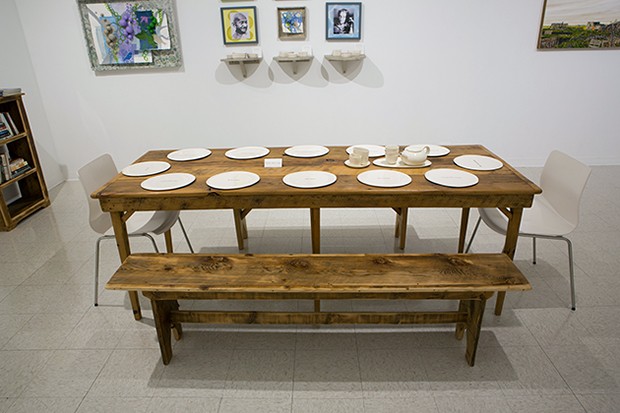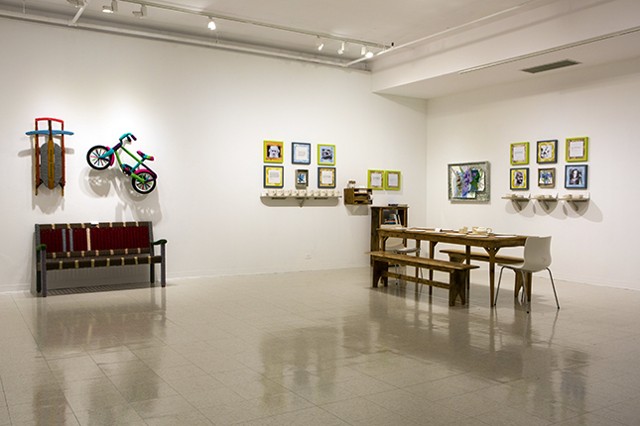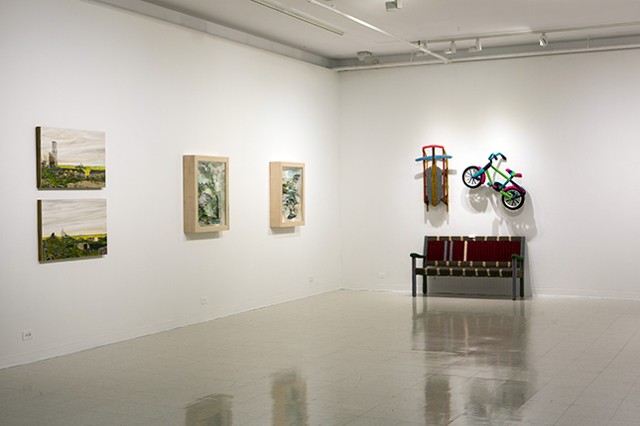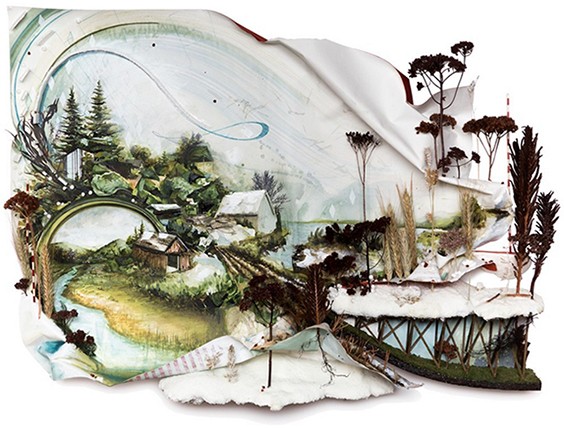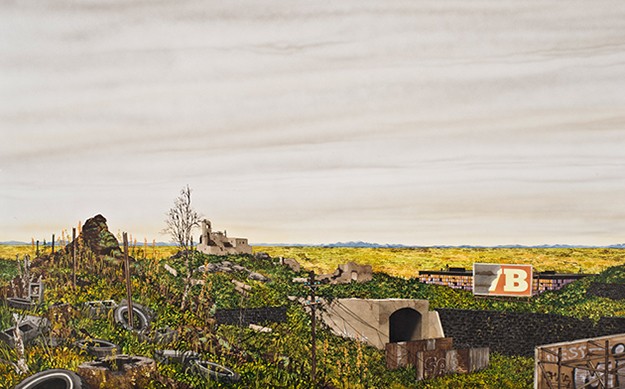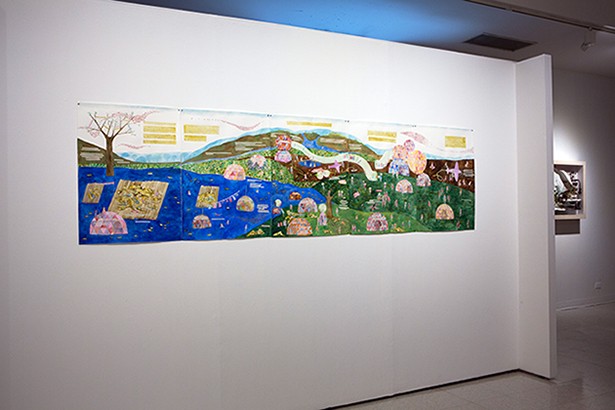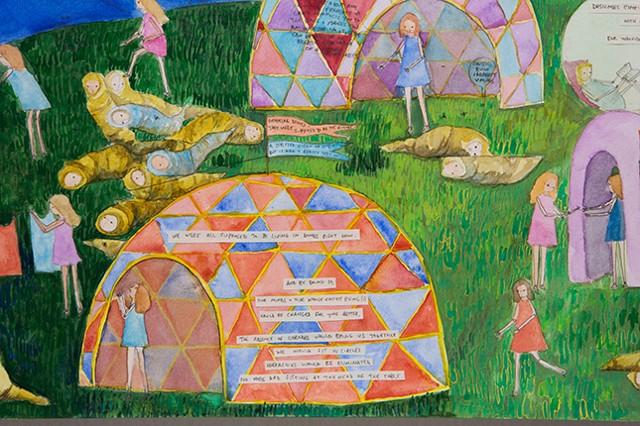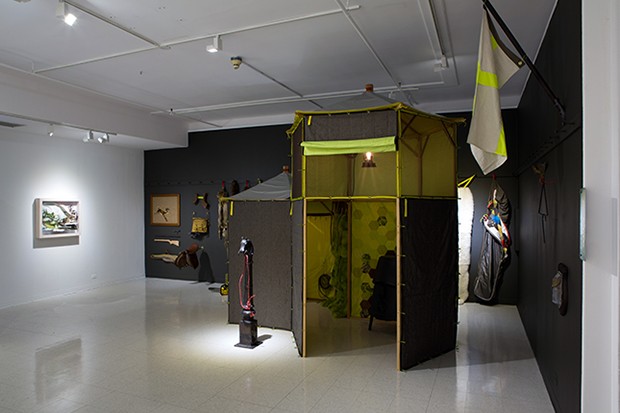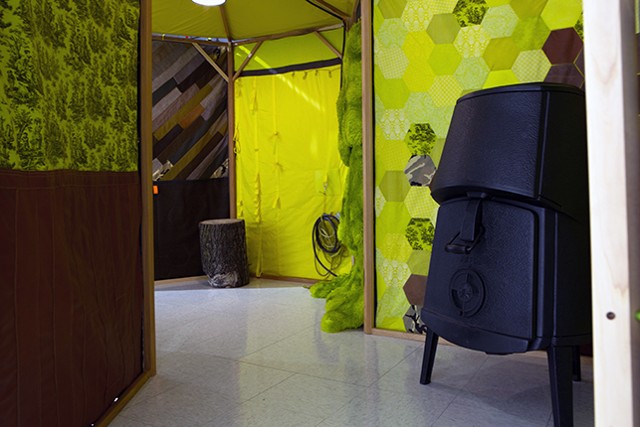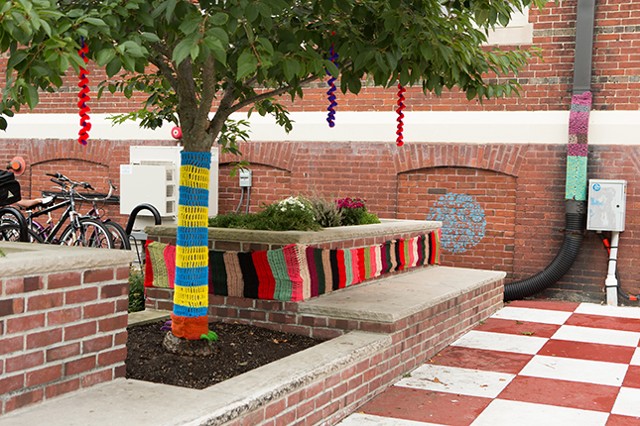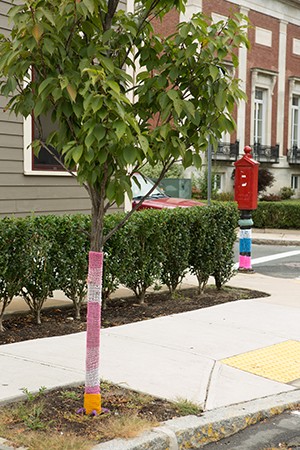Wish You Were There?
Montserrat Gallery
August 24 – December 14, 2013
Wish You Were There? showcases a reimagination of the notion of utopia through the vision of contemporary artists: Mary Anne Davis, Gregory Euclide, Merritt Kirkpatrick, Alex Lukas, Abigail Newbold and Amy Wilson. Underneath the desire to create an ideal world is the realization that we as individuals can nurture new ideas that both critique our current state and imagine a better place.
Since the early writings of Plato, ‘utopia’ has been commonly recognized as a concept that presents the ideal. A place void of the current social struggles and so perfect that it seems only possible through a dream. Simultaneously, the opposite or ‘dystopic’, presents adverse representations of this alternate reality. Curator Bradbury proposes that within each utopic vision the dystopic is already present.
Amy Wilson paints a rainbow of characters living in harmony in, A Utopian Vision (After Bosch). The five-panel work based on her communal living experience during Occupy NY in Zuccotti Park makes us believe that if we open our eyes a little wider utopia can be presently found in the togetherness of others. Similarly ceramicist and sculptor Mary Anne Davis believes a reconnection with community and our relationship with nature threads the definition of utopia around the dinner table. The Dining Room is a metaphorical “island” of utopia in which the audience is encouraged to sit and embrace utopia as a condition of life rather than set locale. Merritt Kirkpatrick associates memory and personal recollection with the utopic and places her yarn bombed objects such as a childhood bicycle or hope chest in the gallery while also installing site-specific pieces on the Beverly Commons. The memory, as imperfect as it may be, can sometimes represent the Utopic simply because its your own.
For others, the impulse to create imagined worlds incorporates a darker future. Alex Lukas and Abigail Newbold equip us not with a narrative of how the world arrived at its dismal state, but rather how to adapt and navigate our new terrain. With slight inclinations of a post-apocalyptic world and seemingly no hope of change, we are left to re-settle in the environment we must now call home. Looking to the future, Gregory Euclide imagines the potential for a beautifully sublime tomorrow. Creating multi-dimensional works that seem to grow out of their frame, he juxtaposes a picturesque landscape with the implied ideal, while always containing a human element and thus the potential for its destruction.
